
How to Use Thermistor: Examples, Pinouts, and Specs
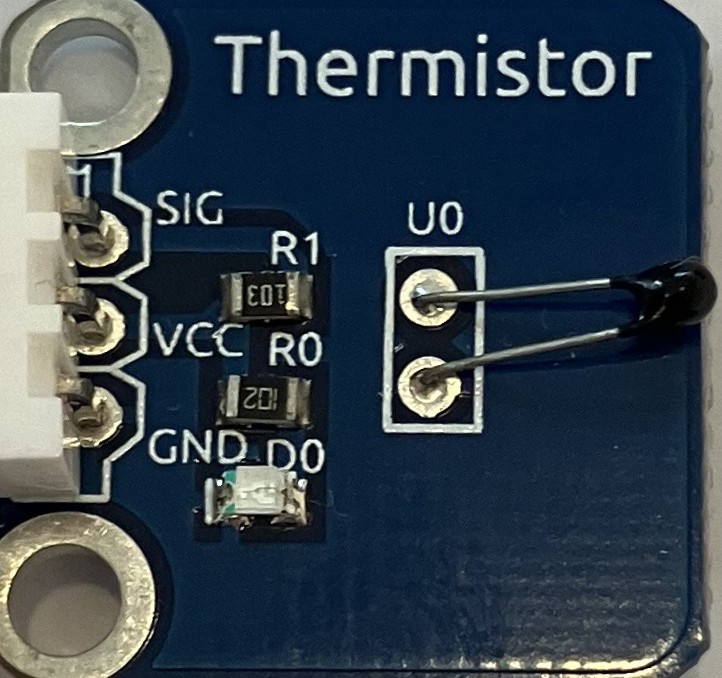
 Design with Thermistor in Cirkit Designer
Design with Thermistor in Cirkit DesignerIntroduction
A thermistor, manufactured by SunFounder (Part ID: Thermistor), is a type of resistor whose resistance changes significantly with temperature. This property makes it an essential component for temperature sensing and control in various electronic circuits. Thermistors are widely used in applications such as temperature monitoring, HVAC systems, battery management, and industrial process control.
Thermistors are classified into two main types:
- NTC (Negative Temperature Coefficient): Resistance decreases as temperature increases.
- PTC (Positive Temperature Coefficient): Resistance increases as temperature increases.
The SunFounder Thermistor is an NTC thermistor, making it ideal for precise temperature measurement in a wide range of applications.
Explore Projects Built with Thermistor
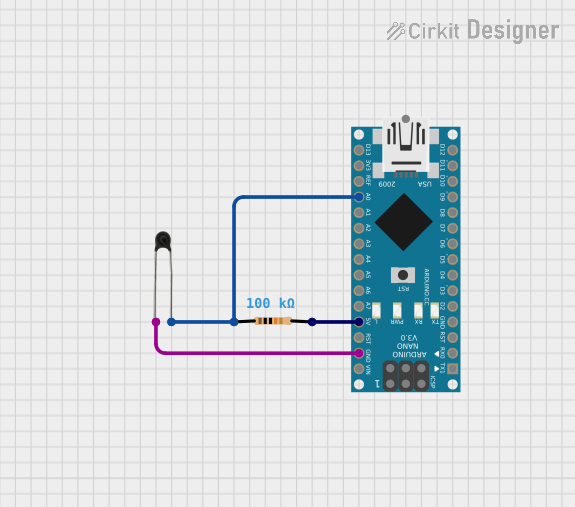
 Open Project in Cirkit Designer
Open Project in Cirkit Designer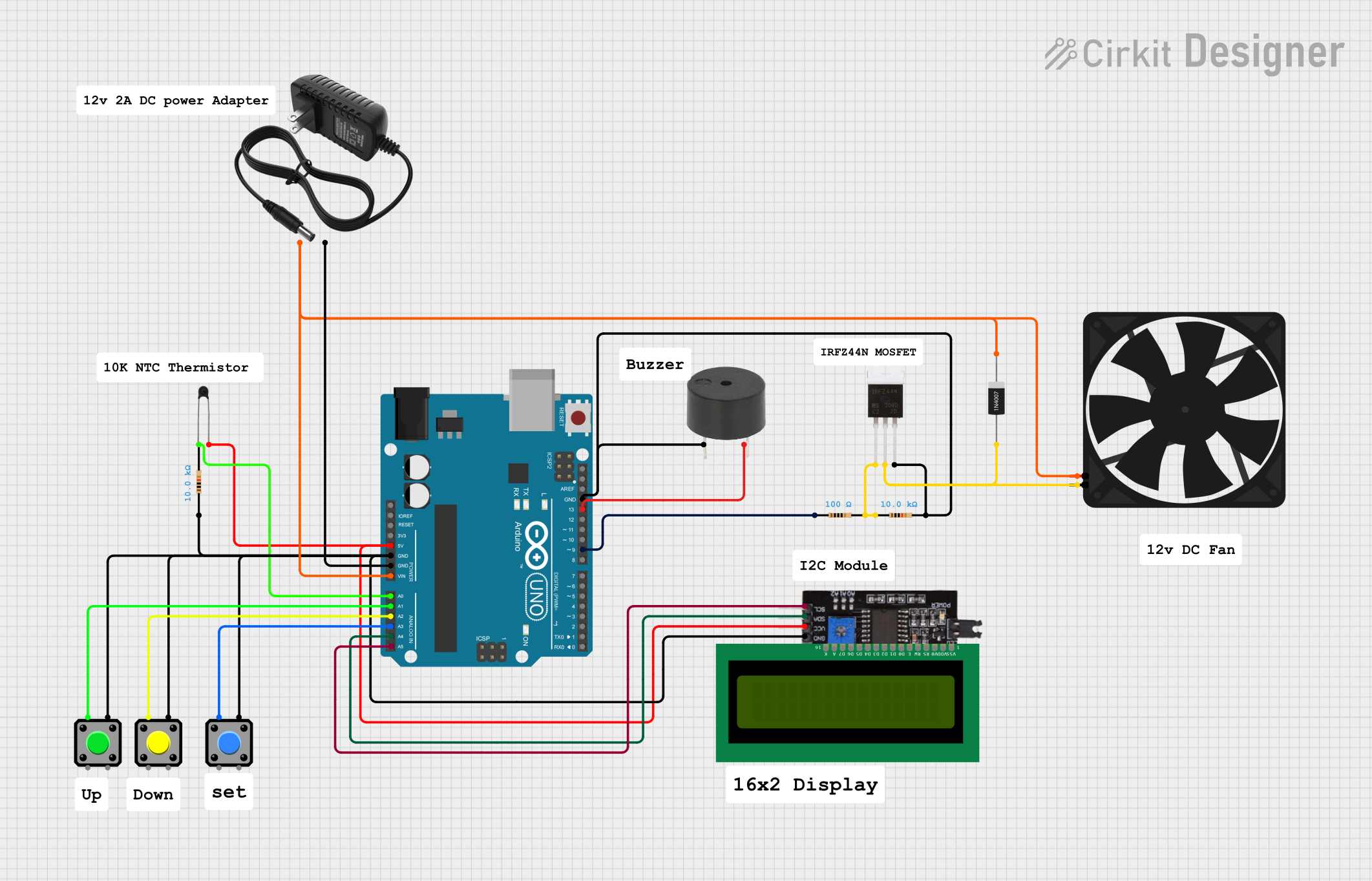
 Open Project in Cirkit Designer
Open Project in Cirkit Designer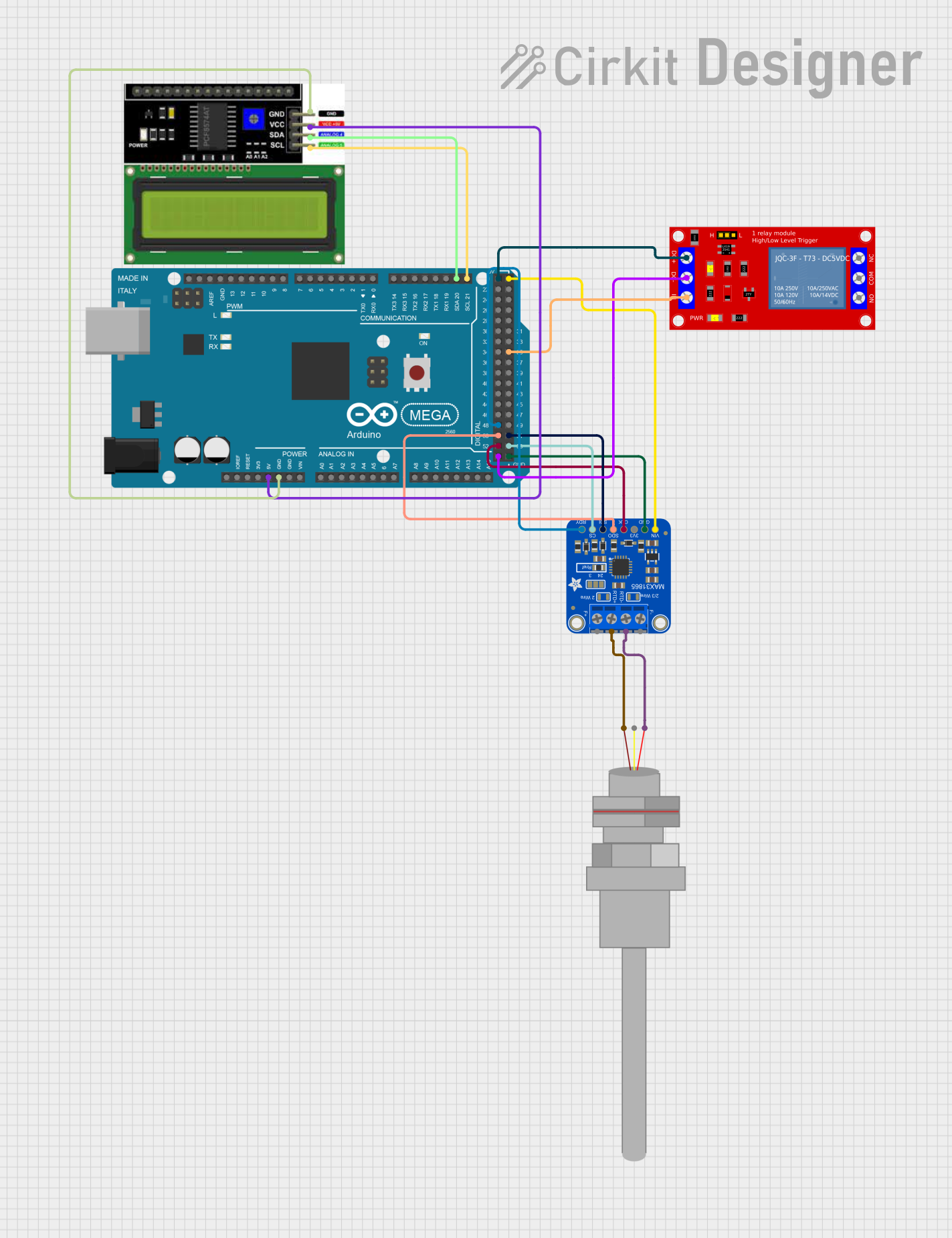
 Open Project in Cirkit Designer
Open Project in Cirkit Designer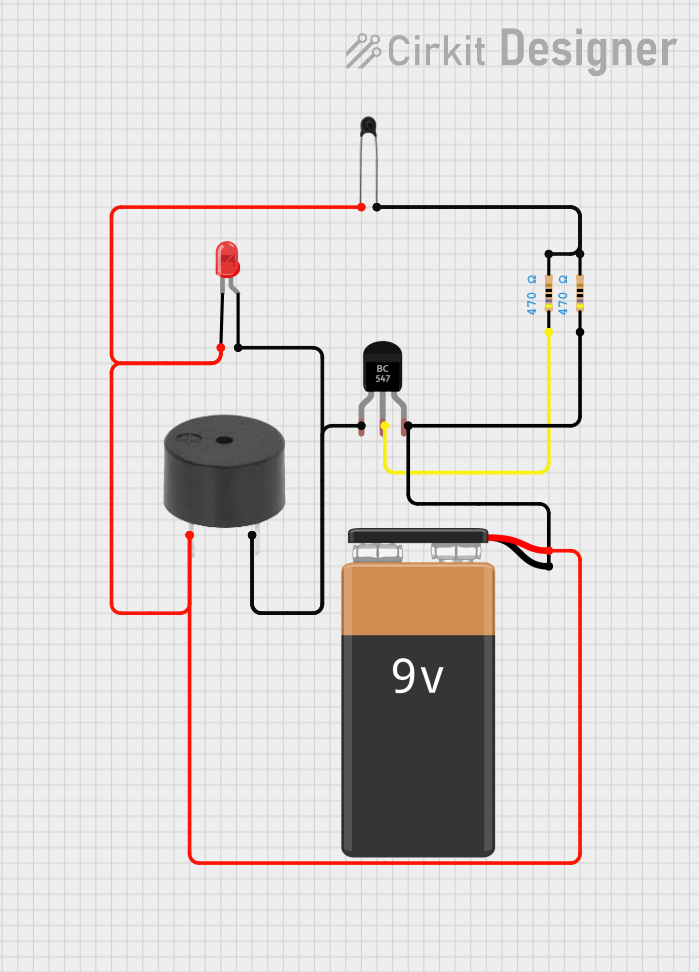
 Open Project in Cirkit Designer
Open Project in Cirkit DesignerExplore Projects Built with Thermistor

 Open Project in Cirkit Designer
Open Project in Cirkit Designer
 Open Project in Cirkit Designer
Open Project in Cirkit Designer
 Open Project in Cirkit Designer
Open Project in Cirkit Designer
 Open Project in Cirkit Designer
Open Project in Cirkit DesignerTechnical Specifications
Below are the key technical details of the SunFounder Thermistor:
| Parameter | Value |
|---|---|
| Resistance at 25°C | 10 kΩ |
| Temperature Coefficient | Negative (NTC) |
| Operating Temperature | -40°C to +125°C |
| Accuracy | ±1% |
| Dissipation Constant | 5 mW/°C |
| Thermal Time Constant | 10 seconds |
| Maximum Power Rating | 500 mW |
Pin Configuration and Descriptions
The thermistor is a two-terminal device. Below is the pin configuration:
| Pin | Description |
|---|---|
| Pin 1 | Connect to one side of the circuit (e.g., voltage divider) |
| Pin 2 | Connect to the other side of the circuit (e.g., ground or ADC input) |
Usage Instructions
How to Use the Thermistor in a Circuit
Voltage Divider Configuration:
- The thermistor is typically used in a voltage divider circuit to convert its resistance change into a measurable voltage.
- Connect one terminal of the thermistor to a fixed resistor and the other terminal to ground.
- The junction between the thermistor and the fixed resistor is connected to an analog input pin of a microcontroller (e.g., Arduino UNO).
Calculating Temperature:
- Use the Steinhart-Hart equation or a simplified Beta parameter equation to calculate the temperature from the resistance.
Power Considerations:
- Ensure the thermistor operates within its power rating to avoid self-heating, which can affect accuracy.
Arduino UNO Example Code
Below is an example of how to use the SunFounder Thermistor with an Arduino UNO to measure temperature:
// Define constants for the thermistor
const int thermistorPin = A0; // Analog pin connected to the thermistor
const float seriesResistor = 10000.0; // Value of the fixed resistor in ohms
const float nominalResistance = 10000.0; // Resistance of the thermistor at 25°C
const float nominalTemperature = 25.0; // Nominal temperature in Celsius
const float betaCoefficient = 3950.0; // Beta coefficient of the thermistor
const float kelvinOffset = 273.15; // Offset to convert Celsius to Kelvin
void setup() {
Serial.begin(9600); // Initialize serial communication
}
void loop() {
int adcValue = analogRead(thermistorPin); // Read the analog value
float voltage = adcValue * (5.0 / 1023.0); // Convert ADC value to voltage
float resistance = (seriesResistor * (5.0 - voltage)) / voltage;
// Calculate thermistor resistance
// Apply the Beta parameter equation to calculate temperature
float temperatureK = 1.0 / (1.0 / (nominalTemperature + kelvinOffset) +
(1.0 / betaCoefficient) * log(resistance / nominalResistance));
float temperatureC = temperatureK - kelvinOffset; // Convert Kelvin to Celsius
Serial.print("Temperature: ");
Serial.print(temperatureC);
Serial.println(" °C");
delay(1000); // Wait for 1 second before the next reading
}
Important Considerations and Best Practices
- Avoid Self-Heating: Use a low current through the thermistor to minimize self-heating, which can lead to inaccurate readings.
- Calibration: For precise applications, calibrate the thermistor with known temperature points.
- Environmental Protection: If used in harsh environments, consider encapsulating the thermistor to protect it from moisture and contaminants.
Troubleshooting and FAQs
Common Issues and Solutions
Inaccurate Temperature Readings:
- Cause: Self-heating due to excessive current.
- Solution: Use a higher resistance series resistor to limit current.
No Output or Constant Value:
- Cause: Incorrect wiring or damaged thermistor.
- Solution: Verify connections and check the thermistor with a multimeter.
Fluctuating Readings:
- Cause: Electrical noise or unstable power supply.
- Solution: Add a capacitor across the thermistor terminals to filter noise.
FAQs
Q: Can I use the thermistor for high-temperature applications?
A: The SunFounder Thermistor operates up to 125°C. For higher temperatures, consider a thermistor with a higher operating range.
Q: How do I protect the thermistor in outdoor applications?
A: Use a waterproof enclosure or epoxy coating to shield the thermistor from moisture and environmental damage.
Q: Can I use the thermistor with a 3.3V microcontroller?
A: Yes, but ensure the voltage divider circuit is designed to work within the 3.3V range.
By following this documentation, you can effectively integrate the SunFounder Thermistor into your projects for reliable temperature sensing and control.